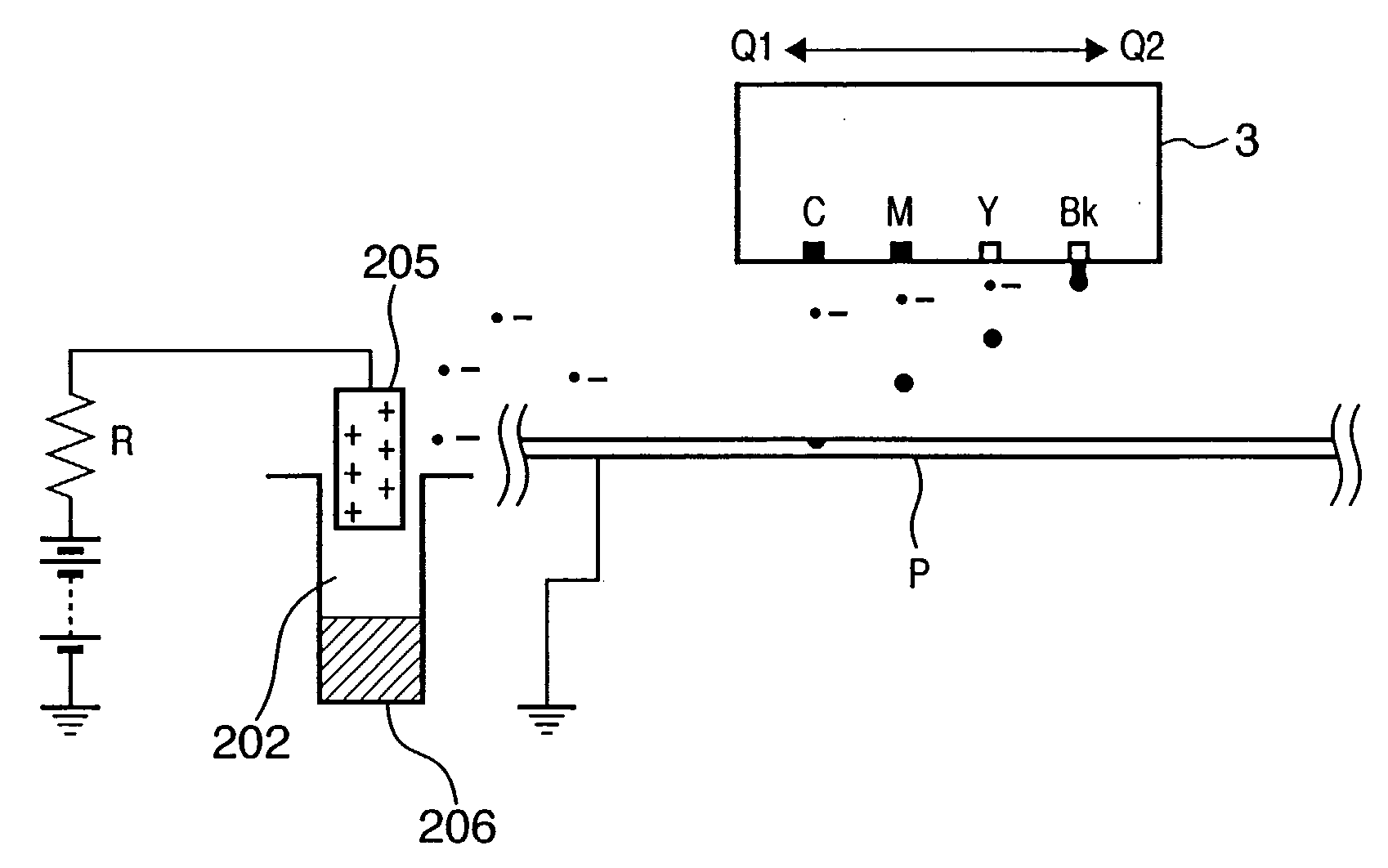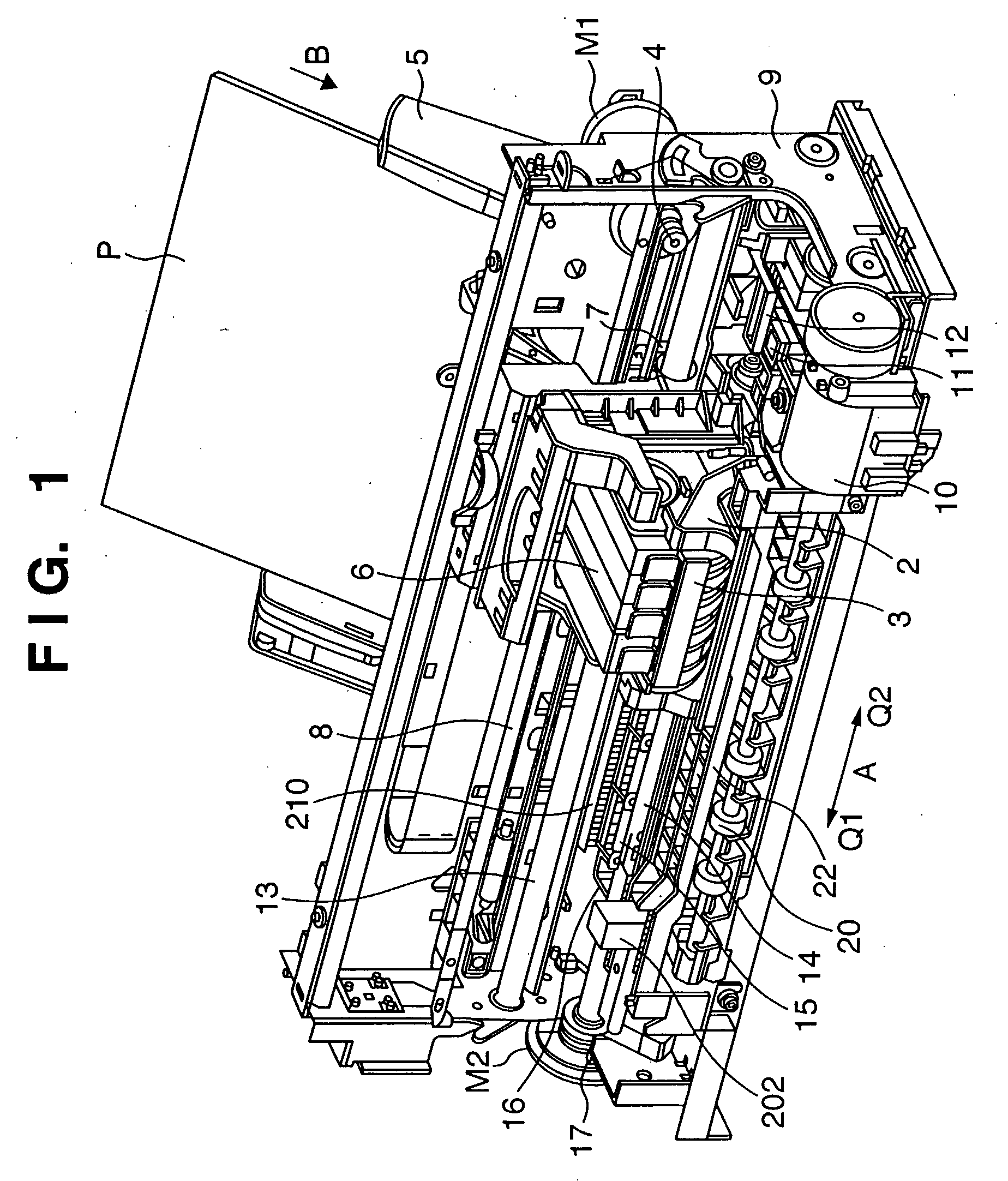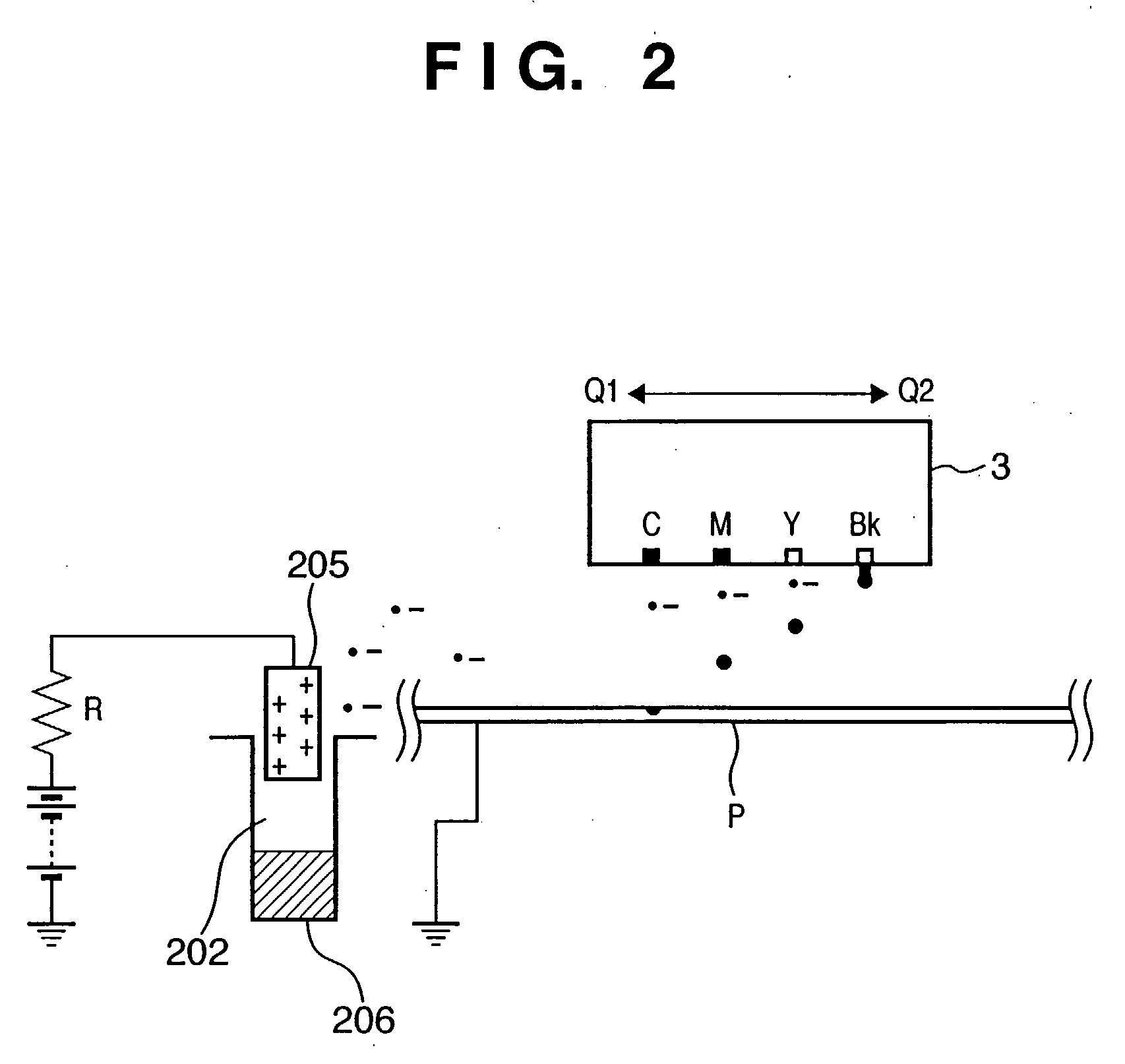Printing Apparatus, Ink Mist Collecting Method, and Printing Method
a printing apparatus and ink mist technology, applied in the field of printing apparatus, can solve the problems of difficult to accurately attach all droplets to desired printing positions, difficult to control ink droplets in such a small volume one by one, and difficult to obtain the desired precision under the influence of peripheral air flow, so as to achieve efficient attraction and collection, reduce the amount of ink mist which floats and attaches to unintended portions of the apparatus, and high-quality printing
- Summary
- Abstract
- Description
- Claims
- Application Information
AI Technical Summary
Benefits of technology
Problems solved by technology
Method used
Image
Examples
first embodiment
[0087] Most of ink droplets about 5 pl (picoliter) in volume discharged from a printhead 3 attach to a printing medium P and form an image. However, small satellites generated around the tail ends of ink droplets, and fine ink droplets bounded back from the printing medium P float in the apparatus. If such satellites and fine ink droplets are left to stand, they contaminate unlimited portions in the apparatus. Especially, satellites and fine ink droplets tend to deposit at electrostatically charged portions such as a sliding portion (e.g., guide shaft 13). There is known a phenomenon (Lenard effect) in which droplets tend to be charged either positively or negatively, especially negatively when an internally polarized droplet is broken into particles or droplets collide against each other in a process of forming (spraying) small droplets containing water.
[0088] For this reason, fine ink droplets (e.g., satellites) generated when ink droplets are discharged from the printhead 3 tend...
second embodiment
[0100] For example, in a large-scale printing apparatus for commercial use or the like that prints on a printing medium as large as A0 or B0, it is difficult to efficiently collect ink mist in the entire apparatus by the ink mist collecting method which only depends on spontaneous diffusion of ink mist and electrostatic force, as described in the first embodiment, because the distance to the ink mist collecting unit is long.
[0101] Taking this into consideration, the second embodiment will explain a configuration in which ink mist floating in the apparatus is forcedly moved by an air current toward the ink mist collecting unit.
[0102]FIG. 7 is an outer perspective view showing the schematic configuration of a printing apparatus according to the second embodiment. As is apparent from a comparison between FIGS. 7 and 1, their configurations are almost the same. The same reference numerals denote the same parts, and a description thereof will be omitted.
[0103] A characteristic feature...
third embodiment
[0109] Ink droplets discharged from the printhead generally travel straight and attach to a printing medium. However, if the printhead moves at a high speed, ink droplets may attach to unintended positions because of an air flow generated by the movement of the printhead or an air flow generated by ink droplets themselves which are successively discharged from the printhead. To solve this problem, a method of increasing the initial velocity of ink droplets to suppress the influence of the air resistance and air flow and increase the precision of attaching positions on a printing medium has conventionally been employed.
[0110] However, as schematically shown in a of FIG. 5 in connection with the first embodiment, ink mist (satellites) which is a problem in the present invention is generated by a phenomenon in which the shape of an ink droplet is deformed into a teardrop shape, and a tail part of the droplet is torn off upon ink discharge. It is, therefore, difficult to increase the i...
PUM
| Property | Measurement | Unit |
|---|---|---|
| volume | aaaaa | aaaaa |
| volume | aaaaa | aaaaa |
| volume | aaaaa | aaaaa |
Abstract
Description
Claims
Application Information
 Login to View More
Login to View More - R&D
- Intellectual Property
- Life Sciences
- Materials
- Tech Scout
- Unparalleled Data Quality
- Higher Quality Content
- 60% Fewer Hallucinations
Browse by: Latest US Patents, China's latest patents, Technical Efficacy Thesaurus, Application Domain, Technology Topic, Popular Technical Reports.
© 2025 PatSnap. All rights reserved.Legal|Privacy policy|Modern Slavery Act Transparency Statement|Sitemap|About US| Contact US: help@patsnap.com



